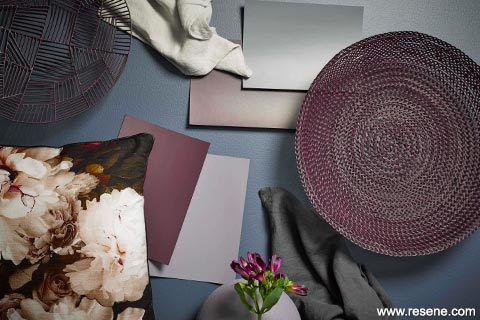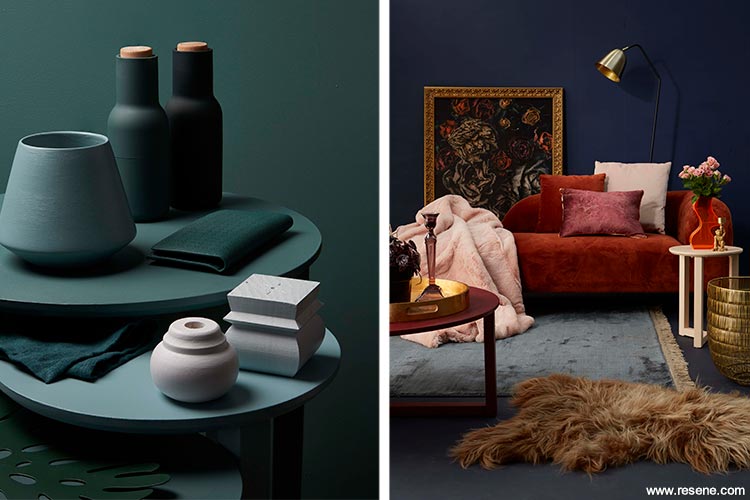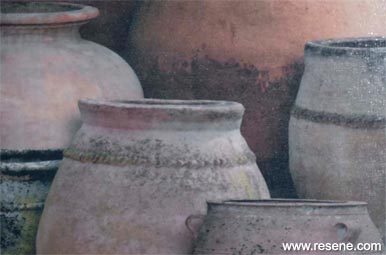From Habitat magazine - issue 28
Avoid paint choice paralysis with our handy 8-step colour guide.

Even if you already know what colours and styles you like, start a file of images that catch your eye. Don’t over-think it, just collect what appeals. When you have a decent-sized collection, look for common elements. You could also collect images of things you really dislike to help you avoid those in your new scheme.
You need to love it: There’s no point painting your interiors in jewel tones if no-one in the family likes jade, ruby or amethyst. The best homes are decorated with the owner’s personality in mind.
A top tip: from colour consultant Megan Harrison-Turner: “With all the decorating styles and choices available it’s easy to be overwhelmed and lose direction. A simple but effective way to stay on course is to choose a few words that describe how you want your home to be and feel. Emotive words, like welcoming, decadent or casual. Use five words maximum. Then with every decision and purchase, ask yourself if it fits the words. That way, you won’t end up with ‘orphans’ in your scheme.”

Looks like it’s luxe for me.


A starting point can mean a few things. The first is to start with the most limited or most expensive material. So in a kitchen, choose the benchtop first, then the flooring. Finally, choose the Resene paint colour for the cabinetry and walls that best ties together all these elements.
Few of us have the luxury of starting from scratch, so figure out what will be staying – the flooring, the sofa, the kitchen? Or outside, it may be the roof and joinery.
Another kick-starter is to use a favourite painting, wallpaper, curtain fabric or a recently purchased cushion as the starting point for a scheme. You can already see that the colours work together so draw them out and use them on the walls and trims. Note the proportions the colours are used in, and mimic that in your colour scheme.
You might use the style of your home or the setting, whether it’s rural, urban or coastal to influence your decorative choices.
Megan’s tip: “An artwork or fabric is usually seen at a distance so rather than get microscopic about the colours within the piece, stand back for an impression of the colour.”
Some colours suit some rooms. A bright turquoise feature wall with yellow polka dots may not be appropriate for a living room but it would be a lot of fun in a child’s room.
An example from Resene colour consultant Becca Long: “A soft grey could look gorgeous in a modern master bedroom matched with crisp white linen, a textured white duvet and a thick and fluffy rug whereas a soft grey in a tiny, south-facing child’s room matched with a bold and colourful bedspread could leave the soft grey looking cold and weak in contrast."
When you’re using a number of colours together, vary the proportions. Using them in equal proportions will give the room an unsettled feel and make the colours feel far too intense. Use the 60:30:10 principle – 60 is the main colour (for most of the walls, and perhaps some furniture and a rug), 30 is the secondary colour that supports the main colour (for example, a feature wall, drapes and linens) and 10 is the accent colour (cushions, lamps and accessories; it could also be a bold paint colour used on a splashback).
If you want bold colour, but still want a cohesive look try a tonal recipe made up of ‘related’ colours – those that sit next to each other on the colour wheel. So green, turquoise and blue is a tonal related scheme. Or, varying shades of green from turquoise to leafy yellow-greens.
A more classic approach to a tonal scheme is to use a colour in varying strengths or shades, such as charcoal through to dove grey. Stick to the 60:30:10 rule. Or use colours from the Resene Whites & Neutrals collection where colour families and variants are already chosen for you.
A suggestion from Megan: “If you’re keen on using a range of colours or have elements that are colourful (like a patterned wallpaper), one way of tying these together is to add a good dose of an ‘achromatic’. That’s black or white, or colours close to them, such as charcoal, pale grey, cream.”
Muted colours are easier to live with but that does’t mean everything has to be pale. A deep charcoal blue can add drama but it’s a very easy colour to use and accessorise.
The mistake most of us make is to not go ‘grey’ enough. What you thought was going to be a smoky blue turns out icy blue on your wall. Check the examples below and you’ll see that Resene Duck Egg Blue is quite grey, compared to Resene Quarter Frozen.
Most people find pale neutrals or pastels easy to use – colours that have quite a bit of white in them. So instead of grass green, you would have soft sage. Instead of brown, it would be beige. Instead of banana yellow, it would be pale lemon, or muddy it up for a soft ochre.
Most of us instinctively know that bright colours are more in-your-face and therefore not as relaxing. These might be best limited to small features, such as a feature wall, furniture, artwork, splashback and accessories. Or use intense hues in areas that are occupied for short periods, such as hallways, bathrooms and entrances. Or on your front door.
If you’re introducing a new colour to an existing scheme, it may be affected by other colours already in the room. If your room is full of blue accents, a new off-white will tend to reflect some of the blue tones. Dark blue placed next to white will seem much darker than if it is next to another dark colour.
The gloss level of the paint will affect how it looks. Matt surfaces absorb light and will appear darker than glossy reflective surfaces. Dark colours look velvety and rich in a matt finish – try Resene SpaceCote Flat. Light colours and glossy finishes help make a room appear larger, while darker colours, heavier textures and matt finishes help make the room seem cosier.
Resene SpaceCote Low Sheen or Resene Zylone Sheen are normally recommended for walls while Resene Lustacryl gives a good tough, semi-gloss finish for trims. For more of a gloss contrast you can use Resene Enamacryl on trims.
Like gloss level, the colour paint you use will also show surface defects to varying degrees. Darker colours accentuate surface imperfections, while lighter colours soften the effects of any surface irregularities by absorbing less light. Special paint effects or wallpaper can be used to hide minor surface defects.
This can mean the right artificial or natural light. If you’re painting a north or west facing room that gets lots of sun, avoid colours with a warm base. Cooler based colours are best. Use warm-based colours on the south side of the house not cool ones.
Ceilings get a lot less natural light than walls, so look darker. Consider painting your ceiling a half or quarter strength of your neutral wall colour so it doesn’t look darker than the walls.
Different types of lighting can also affect the appearance of colour. Classic incandescent lights cast a warm glow, while the rise in popularity of LEDs is good for your colours as this type of light gives a ‘truer’ rendering. Which leads us to…
Once you have narrowed down your colour choices, use Resene testpots to confirm your scheme. Apply two coats onto a piece of A2 card, leaving a border around it so the colour isn’t influenced by anything else. When the paint is dry, pin your colour to the wall and view it in daylight and artificial light, moving it around different areas of the room and folding it into the corner of the room for a true feel of the finished effect. Check how it looks in lighter areas as well as shadowy spots. You can also roll the card with the painted surface on the inside, then look down into the tube to get the effect of the colour as it might appear on all of the walls.
For exterior schemes, move the painted card around different walls, checking it in sun and shade.
Top tip: If you love the colours in a fabric or artwork, load a snapshot of it into the Resene Colour Palette Generator and it will suggest some Resene colours for you to help get you started.
See www.resene.com/palettegenerator.
Search habitat magazine stories
Printed copies of habitat highlights are available from late March 2024 at Resene ColorShops and resellers, while stocks last. You can view back issues of habitat magazine online.
Specifiers:
If you have an idea, project or story that you think would suit habitat, we’d love to hear from you. Please drop us an email with your details and include photos if submitting a project.
Sign up for a DIY card and Save! Australia | New Zealand